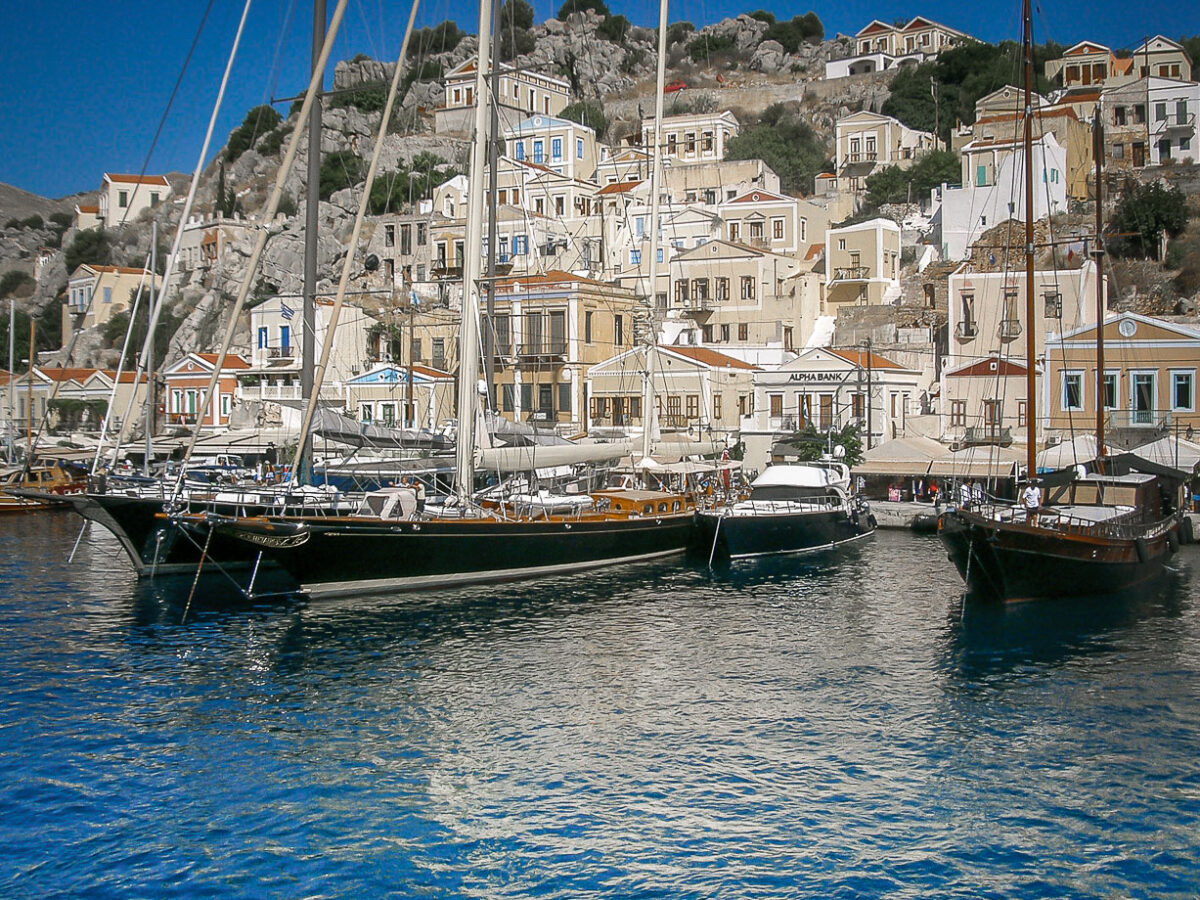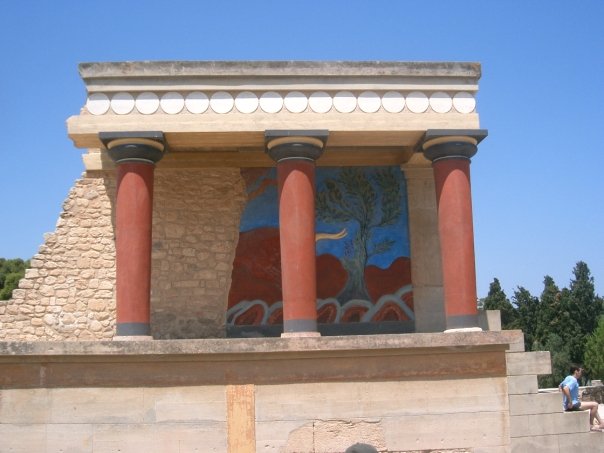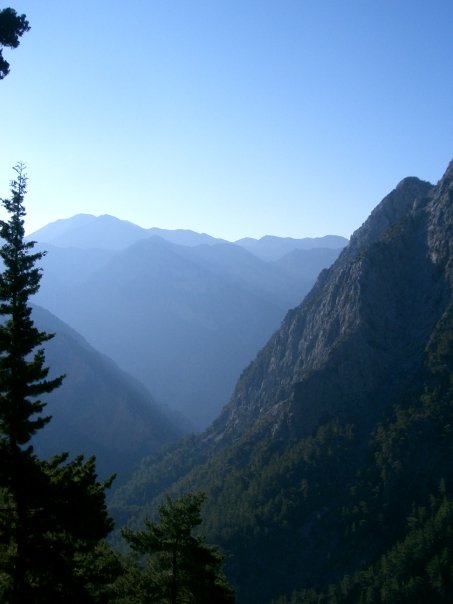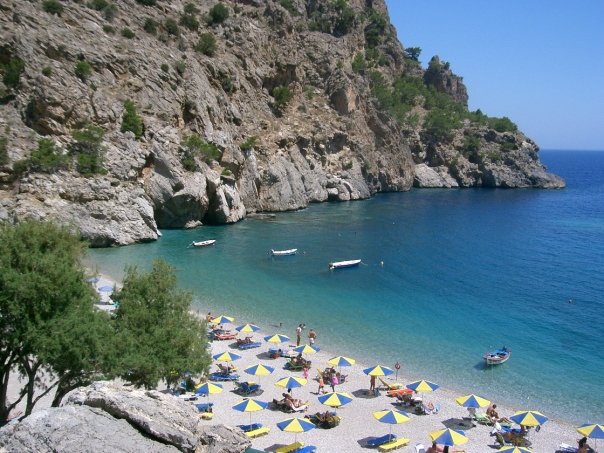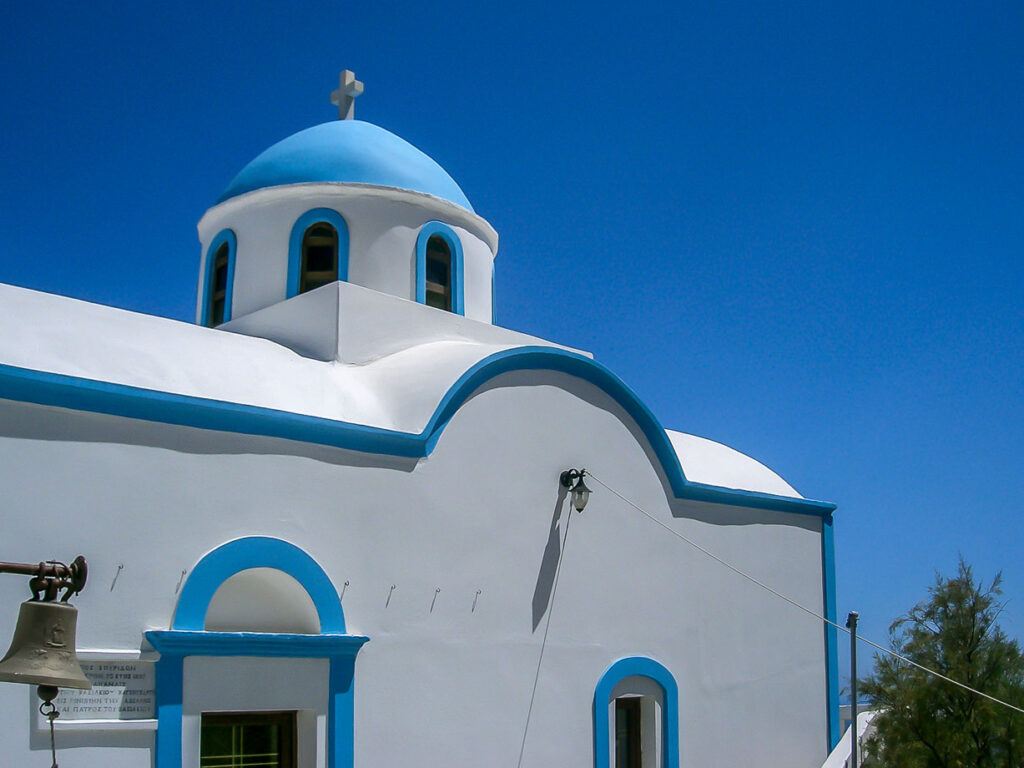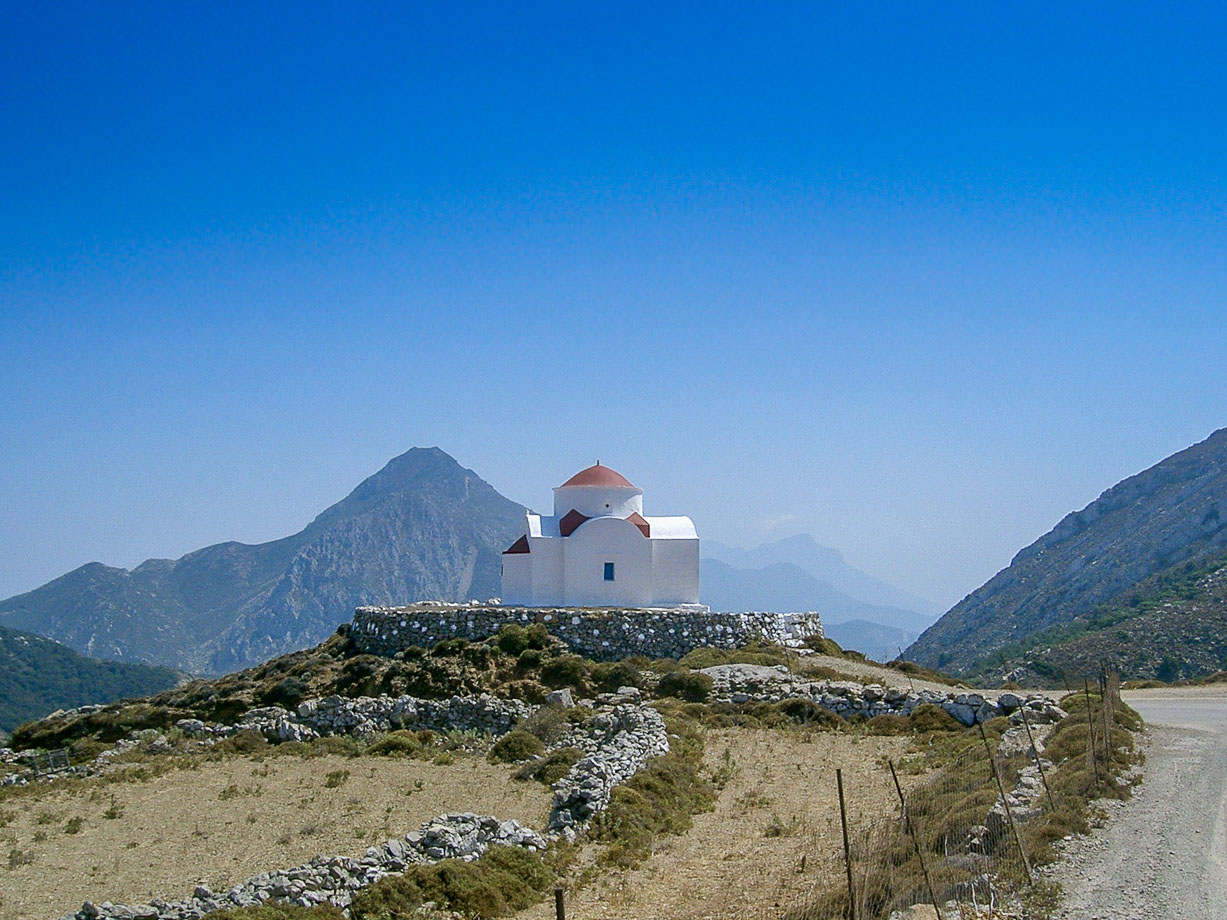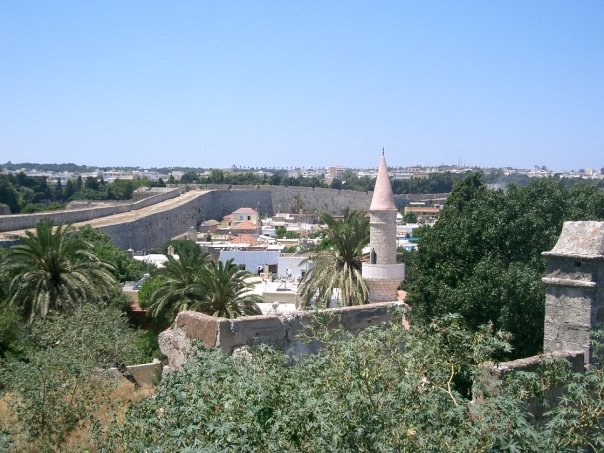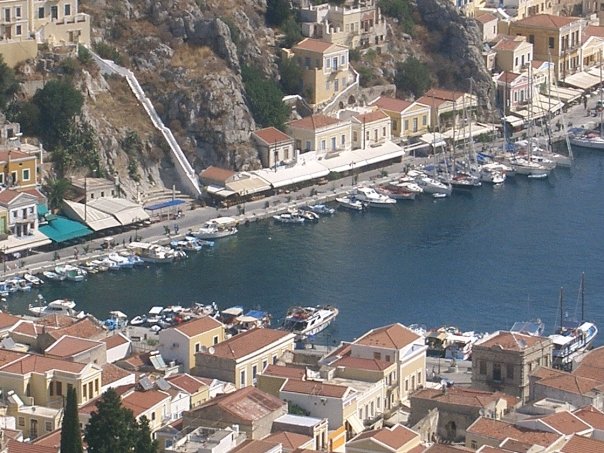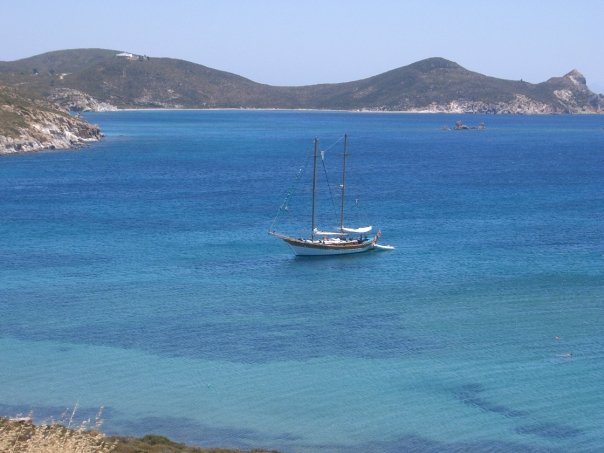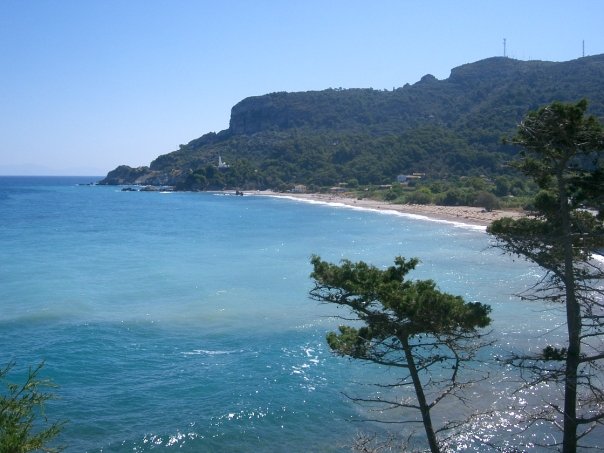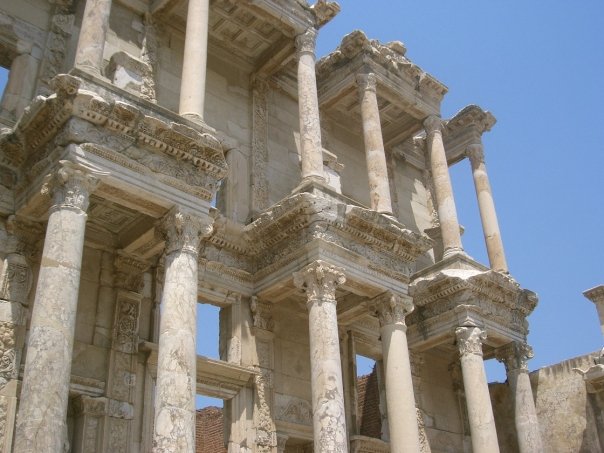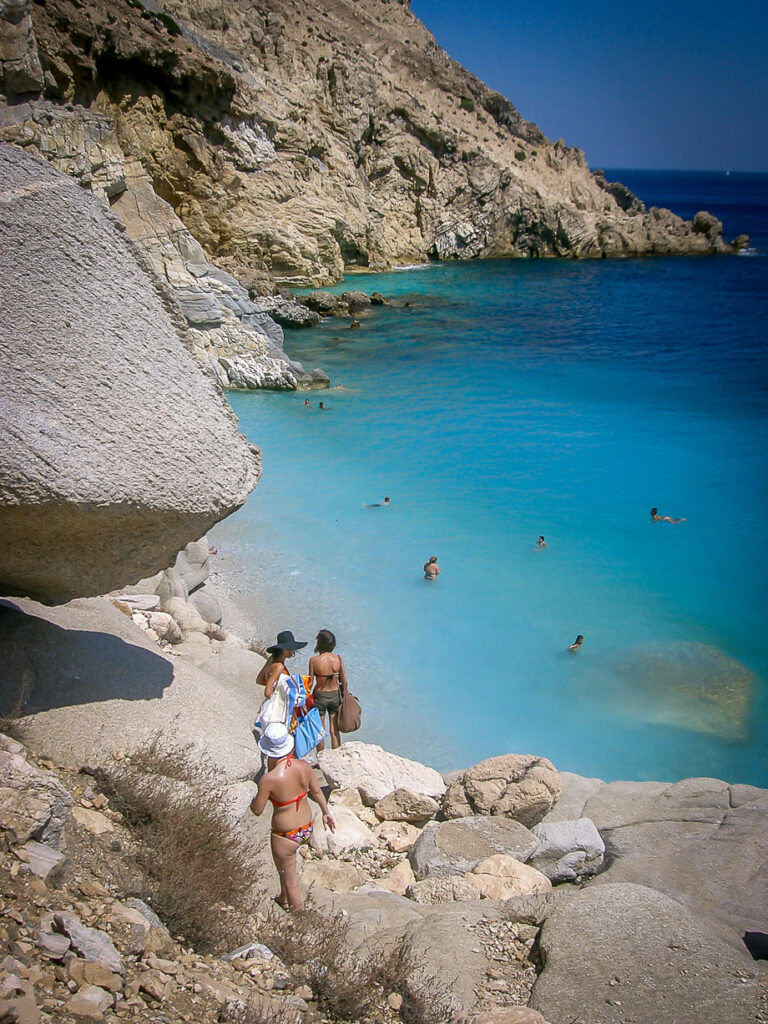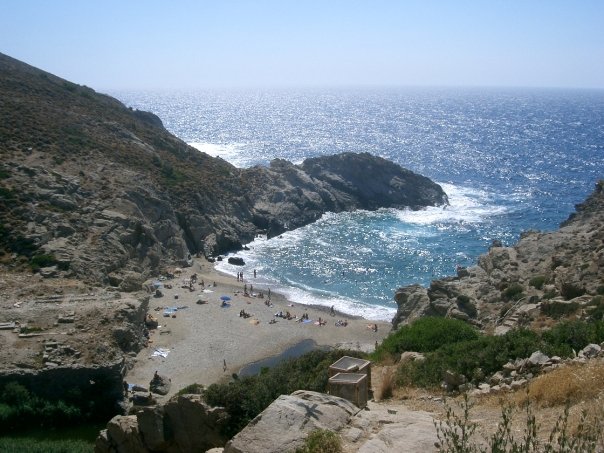I travelled around the Greek islands for 6 weeks in July and August of 2008. You can’t cover all the Greek Islands in 6 weeks, so I had to make a choice. I decided on the Dodecanese group, meaning “12 islands”. I started in Creta (ok, not technically in the Dodecanese) and travelled to Karpathos, Rhodos, Simi, Patmos, Samos and Ikaria. Ok, so Samos and Ikaria are also not technically in the Dodecanese, but let’s not be nitpicky.
Things I learned about travelling the Greek Islands
- Every island is different and has its own character or special feature – one island has a famous church, another is known for its historic villages or wild rugged coastline and so on.
- Despite the fact that they have individual features and characteristics, the Greek Islands all start to look pretty much all the same after a while. The food is the same. The geography is the same – mostly are just piles of rocks, with the exception of Samos and Ikaria, which are forested.
- Each island has its own set of tourists. For example, Karpathos is a Scandanavian island. Rhodos is British, Simi Italian, Patmos French, etc.
- Don’t go to the Greek islands in summer. It’s unbearably hot and peak tourist season, especially in August when everyone in Greece takes their summer vacations and it gets even more expensive.
- The Greek Islands are expensive. I had this idea I would be eating fish every day. How naive of me! I ended up eating Greek Salad for breakfast, lunch and dinner.
- You can escape the tourist hordes. Tourists are stupid. They like to hang out with other tourists and get drunk, eat in tacky overpriced restaurants and listen to horrible Greek music. Just walk in the opposite direction and you will find local restaurants and other hidden gems. The best part is – you will have this all to yourself!
- Greece has some nice beaches. Unless you’ve been to some really good beaches in Asia or Latin America. Then Greece has some average beaches.
- Apart from lying on the beach, there is not that much to do. You can go hiking. Good luck in the middle of summer. There is little shade and you will need to carry a ton of water, which is heavy, making you sweat even more!
The Greek Islands
Creta (Crete)
Creta is the largest of the Greek Islands. It is very mountainous and I didn’t have my own transport, so decided to concentrate on the north west part of the island. The capital is Heraklion. It has a population of 600,000. It is the most visited tourist destination in Greece.
I stayed in Chania (Hania). It has a nice old town. One side is full of hideous tourist trap souvenir shopy and tacky restaurants for the regular tourists. Walk in the other direction and you will find hidden gems, like old ladies hanging their washing out of their windows and traditional old squares where local gather and play beautiful authentic Greek music.
There are lots of gorges. I did a hike through the Samaria Gorge. You can also visit some archeological sites. I went to the Minoan ruins of Knossos.
Karpathos
Karpathos is another large island in the Dodecanese. It is an island of two parts: the south, which has beaches and tourists (mostly Scandanavians) and; the north, which is rugged and mountainous and completely free of tourists.
To get to the beaches, you need to have your own transport. I hired a scooter. I had a helmut but just rode along at 80kmph wearing t-shirt and shorts, as you do. Later in the town, I was driving at 5 kmph down a lane and suddenly a car came out from a side street. I had to a jam on the breaks the bike slid from under me. I ended up quite badly cut and grazed. Travelling at only 5 kmph. I hate to think what might have happened had I had an accident on the open road.
These days, I never hire scooters and refuse to get on the back of one, even if it means I have to wait in traffic jams in a taxi. As I always say, if you don’t ride bikes back home, why do you think you can master the art of riding one in a foreign country with unpredicable conditions.
The north part of the island is much more rugged and far less touristed. I much preferred this part of the island where I could get away from the tourist masses and do some hiking. In the north, there is a cute village on the side of a hill called Olymbos. Olymbos has its own unique traditional dress and way of life, which developed separately from the rest of the island due to its isolation.
Rhodos
Rhodos (Rhodes) is another very popular Greek island. After Creta, it is the most visited tourist destination in Greece. Rhodos (the city and capital) has a beautiful old town surrounded by a walled fortress. It was the home of the Collosos of Rhodes, a huge statue and one of the ancient wonders of the world.
Rhodos is predominantly visited by British tourists, the worst miscreants on the planet. I lived 6 years in England. The typical idea of a holiday for the vast majority of Brits is to get absolutely wasted and fry themselves in the sun until they turn orange. I have a couple of theories for this behaviour.
Firstly, the Brits are very prudish and repressed sexually. The one time they feel they can really let loose and shag as many people as possible is on holiday. They are not used to the “free pour” system for spirits (for example in Spain) and underestimate the strength of the alcohol. On some Greek islands, the locals have had to put up with drunken couples having sex on the street after stumbling out of some nichtclub.
Secondly, back in the days before we had mass tourism and the era of budget airlines, like Ryanair and Easyjet, taking an holiday abroad was prohibitively expensive and only for the rich elite. Therefore, being able to afford to take time off and spend it on a beach somewhere was a sign of status. So, for the class conscious Brits, it is extremely important to exhibit their status by having a tan/very bad sunburn upon returning from holiday. Once, I took a 2 week vacation in the south of Spain in April. Unfortunately, it rained every day. When I got back to work, everyone asked me: “Where’s your tan, then?”, as if without having a tan, I had no proof at all that I had actually been in Spain and not on my couch at home playing video games!
Symi
Symi is a small, upmarket island, mostly visited by Italians. It has a stunning harbour full of expensive yachts. The houses are painted nice colours. It was one of the nicer islands I visited on my trip.
Patmos
Patmos is another small island. It’s a famous pilgrimage spot for Christians. There is a famous church and monastery. Some nicely painted doors on the houses. Lots of French people there, if I recall correctly.
Samos
Ok now onto my second favourite island of the trip, Samos. Samos is another big island and unlike most of the others is forested even in the middle of summer. There are many hiking opportunities to the interior and along the coast to wild rugged beaches you will have all to yourself.
Samos was extremely hot. I was in one town whose former name translates to English as “the frying pan”. It was no exaggeration. 42 degrees in the shade. All you can do it sit there and sweat.
It is very close to Turkey and you can make a day trip to Ephesus and see the Greek ruins there.
Ikaria
Finally my favourite island of the whole trip, Ikaria. Ikaria was what I had been expecting from a Greek island. Back in the ’60s and ’70s, the Greek islands were cheap places where hippies and alternative communities gathered. Those days are long gone and islands like Santorini and Mikanos have become expensive, crowded hotspots for the rich and tasteless.
One thing that struck me in this trip was that there were very few young local tourists. I started to realise that due to mass tourism, young people have been priced out of the market and cannot afford to go on holiday in their own country. Many young people camp illegally or share a room with 6 people sharing 2 beds.
Ikaria was somehow different. It has a completely different vibe. Traditionally it has been a haven for non-conformists and far left wing political activitists. You can also smoke weed there (not recommended anywhere else in Greece due to harsh penalties).
Like Samos, it is a large mountainous island with many wild beaches and hiking opportunities. One day I went for a hike into the mountains and found a random village. It was about 4pm and I was hungry so went looking for a restaurant open. There were a couple of places – they looked to be open, but there was absolutely no-one around. I had to knock on some doors before someone emerged to take my order. I was the only customer. The village was literally deserted. The next day, I told someone this story and they asked me, oh, did you to to the party? What party? I asked. Then I found out I had missed some amazing party later that evening. I said what time was the party – oh they sleep all day and start the party at 4am in the morning!
It is famous for its beaches – Seychelles Beach is a stunning beach with crystal clear turquoise water. There is a also a nude hippie beach where young people camp illegally. To get there, you have to take a bus. On the way back, I had to hitchhike due to the irregularity of the bus service. A woman with 2 small kids picked me up. I started chatting to her in English. When I told her I was from New Zealand, she interrupted me to say something to the kids. She spoke some strange language which I didn’t initially recognise as Greek. Then she explained to me. They were from Switzerland and living in Greece. She told me, when the kids play in the sandpit, they dig and dig. Deeper and deeper. Then she tells them if they keep digging deeper and deeper, they will dig a whole right the way through the earth and out the other side of the world to New Zealand! So, she had to tell them here was someone from New Zealand!
